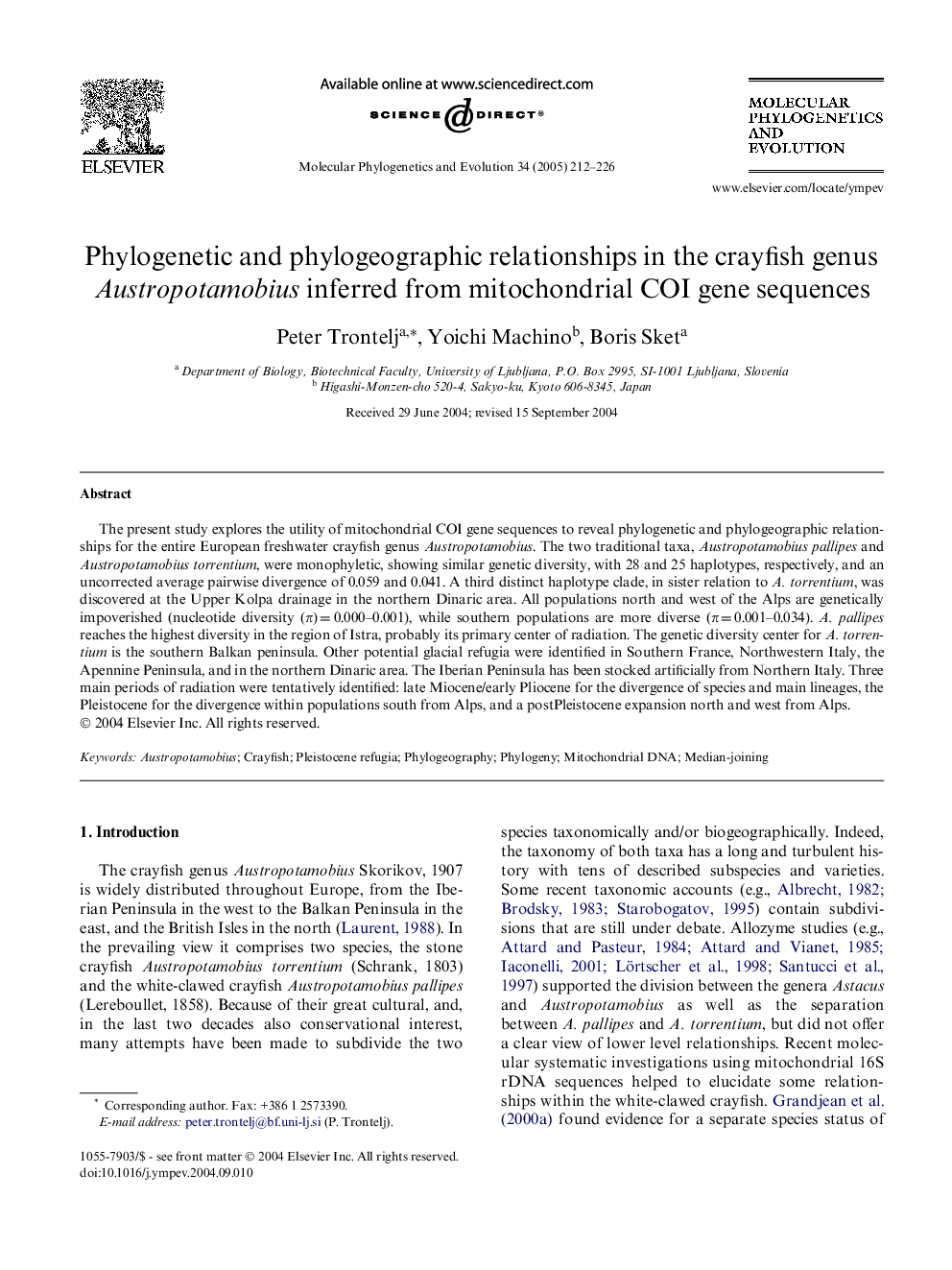| Article ID | Journal | Published Year | Pages | File Type |
|---|---|---|---|---|
| 9142909 | Molecular Phylogenetics and Evolution | 2005 | 15 Pages |
Abstract
The present study explores the utility of mitochondrial COI gene sequences to reveal phylogenetic and phylogeographic relationships for the entire European freshwater crayfish genus Austropotamobius. The two traditional taxa, Austropotamobius pallipes and Austropotamobius torrentium, were monophyletic, showing similar genetic diversity, with 28 and 25 haplotypes, respectively, and an uncorrected average pairwise divergence of 0.059 and 0.041. A third distinct haplotype clade, in sister relation to A. torrentium, was discovered at the Upper Kolpa drainage in the northern Dinaric area. All populations north and west of the Alps are genetically impoverished (nucleotide diversity (Ï)Â =Â 0.000-0.001), while southern populations are more diverse (ÏÂ =Â 0.001-0.034). A. pallipes reaches the highest diversity in the region of Istra, probably its primary center of radiation. The genetic diversity center for A. torrentium is the southern Balkan peninsula. Other potential glacial refugia were identified in Southern France, Northwestern Italy, the Apennine Peninsula, and in the northern Dinaric area. The Iberian Peninsula has been stocked artificially from Northern Italy. Three main periods of radiation were tentatively identified: late Miocene/early Pliocene for the divergence of species and main lineages, the Pleistocene for the divergence within populations south from Alps, and a postPleistocene expansion north and west from Alps.
Related Topics
Life Sciences
Agricultural and Biological Sciences
Ecology, Evolution, Behavior and Systematics
Authors
Peter Trontelj, Yoichi Machino, Boris Sket,
